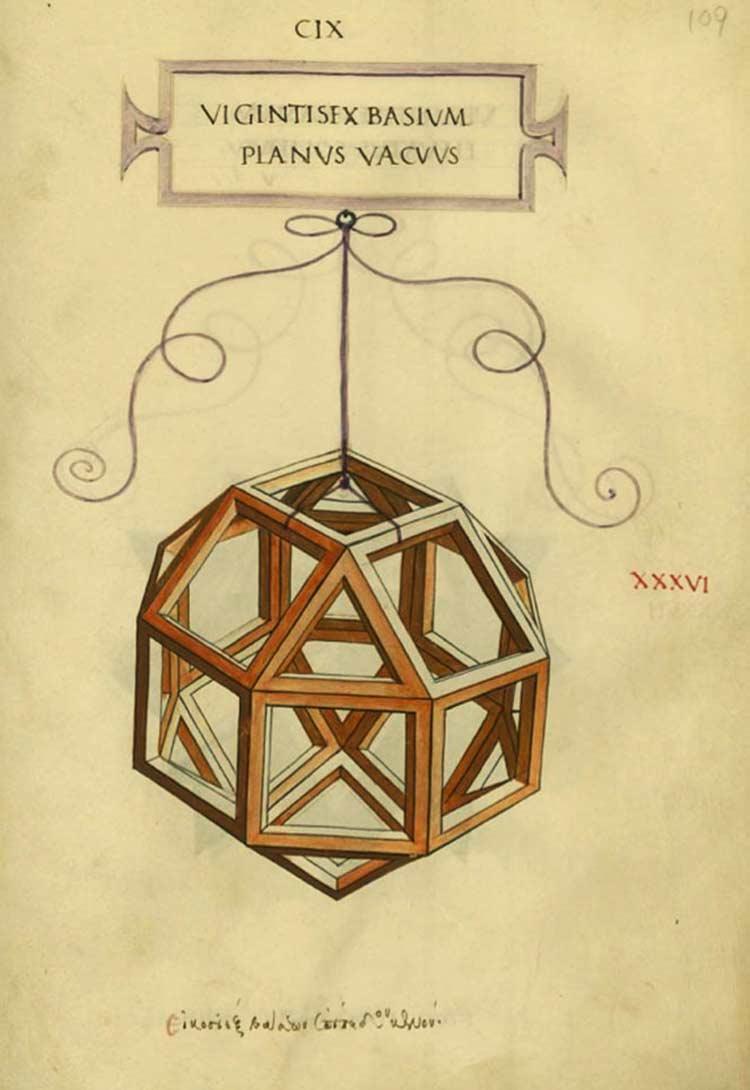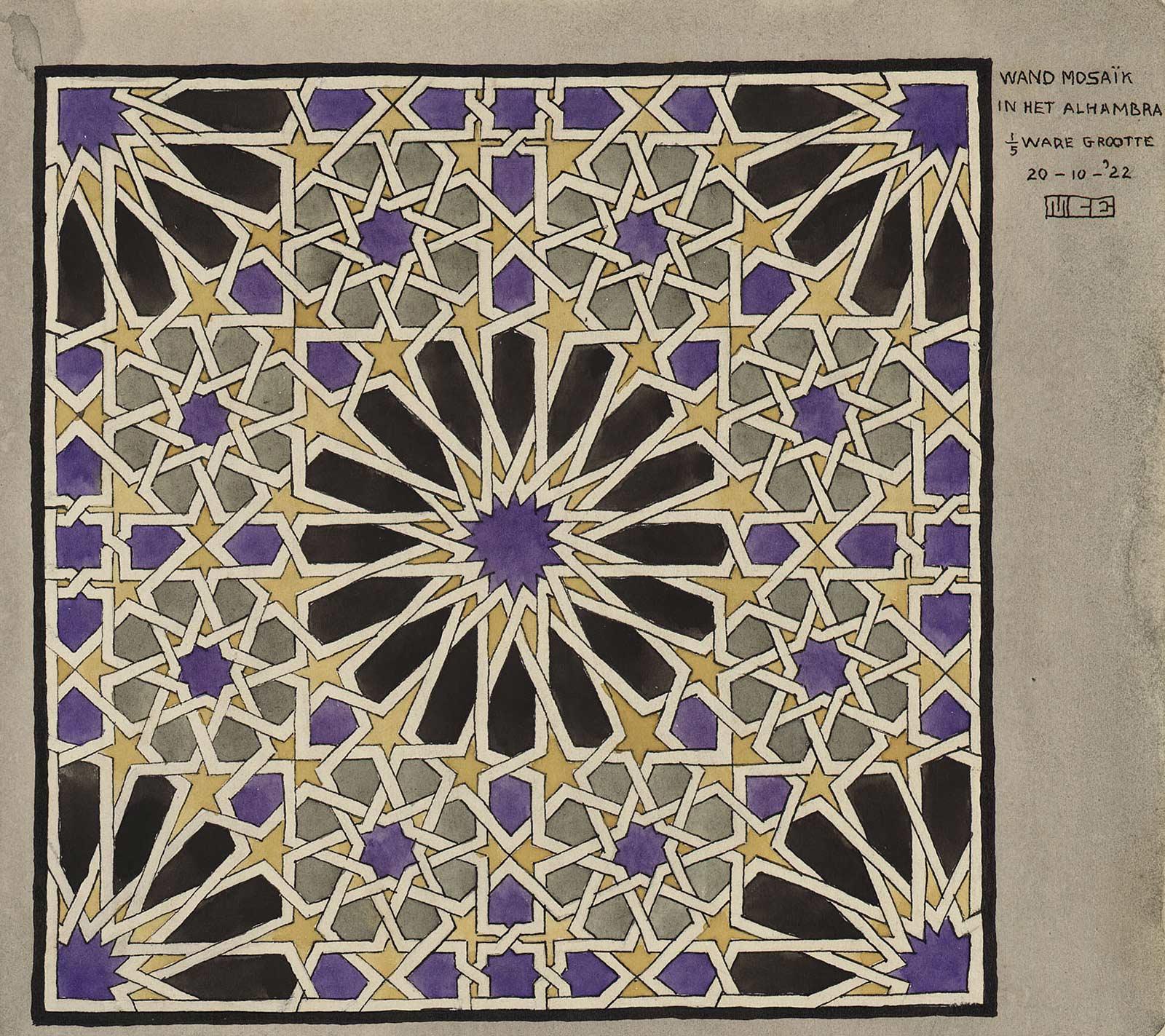

Nowadays M.C. Escher may well be very popular with both the general public and art critics, but this was certainly not always the case. He was ignored by many art lovers and critics for a long time. His work was dismissed as decorative and was at best technically deft. Content-wise he had nothing to offer. This opinion is found as far back as the earliest reviews in the twenties and kept resurfacing in the decades that followed. Escher had been exhibiting on a regular basis throughout his life, but these exhibitions failed to draw many visitors. This lasted until the large retrospective exhibition in the Gemeentemuseum in The Hague in 1968, which was the first occasion on which he attracted a large crowd. Ironically, Escher’s popularity with the general public (which kept on growing after his death in 1972) was a reason for critics to consider his work as ‘non-art’. As if to suggest that an artist’s popularity with the common man precluded him from holding the status of real artist. This article from the Nieuwsblad van het Noorden, published on 28 January 1972, is a good example of how art critics often responded to him.
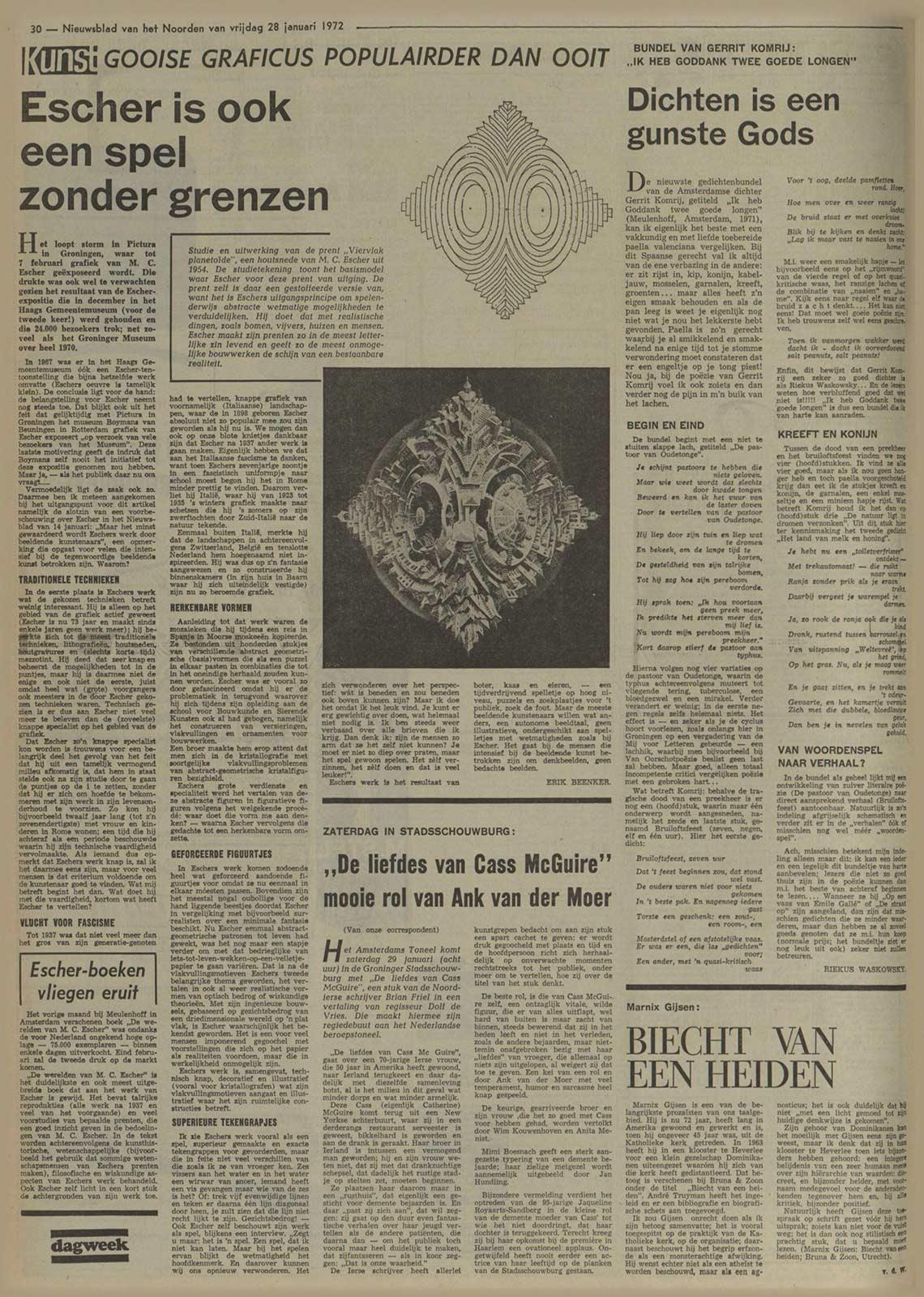
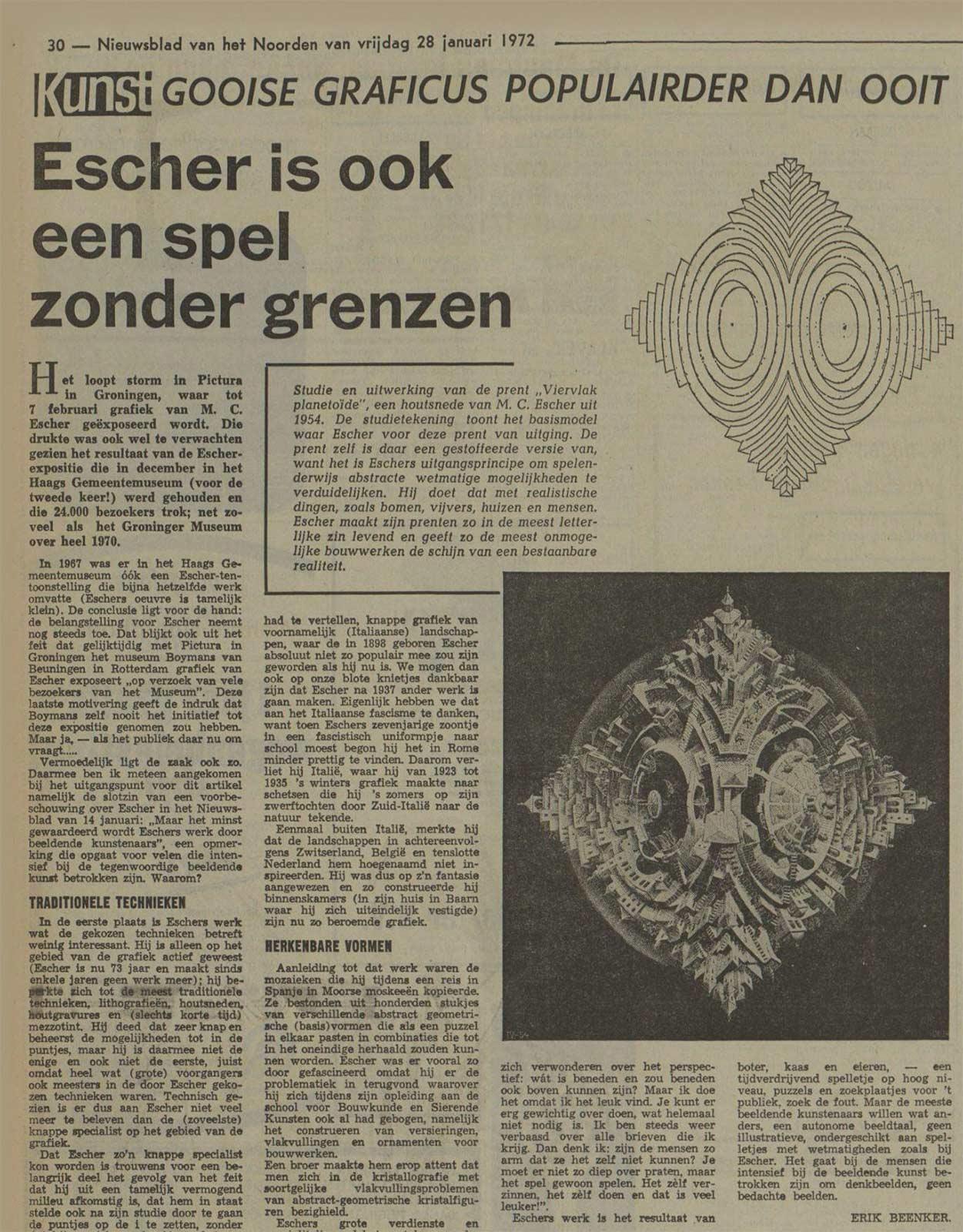
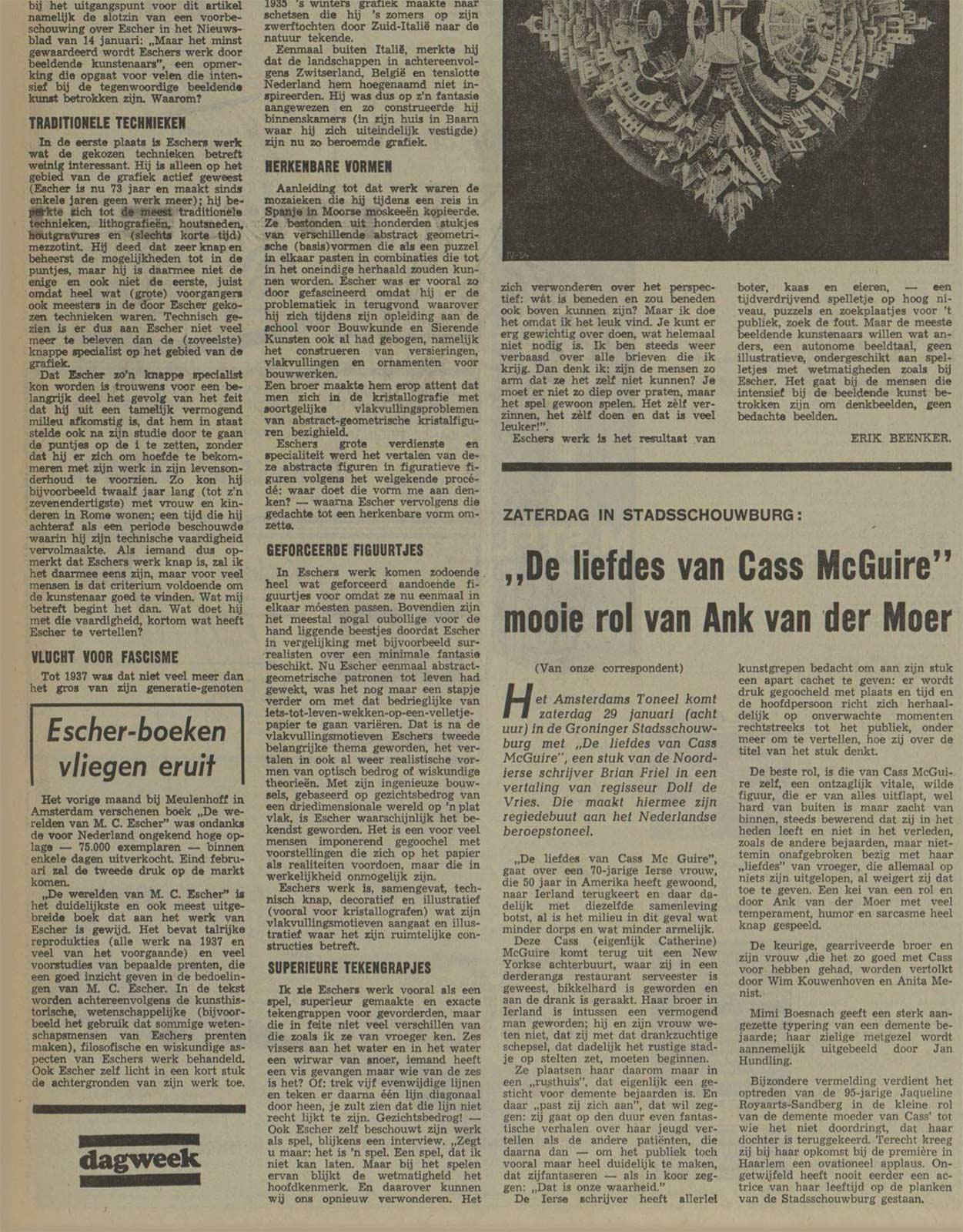
Initially it seems to be laudatory enough. The headlines are very positive and the author starts with the observation that the artist is becoming increasingly popular with the public. The article was published in response to an Escher exhibition in Pictura in Groningen, but at the same time there is also an exhibition in Museum Boijmans van Beuningen in Rotterdam. ‘At the request of many visitors to the Museum.’ The author suspects that Boijmans would never have held it otherwise. He then begins to systematically tear down the artist, using words such as ‘of little interest’, ‘traditional’, ‘old-fashioned’, ‘forced’, ‘juggling’, ‘game’ and ‘the result of a game of tic-tac-toe’
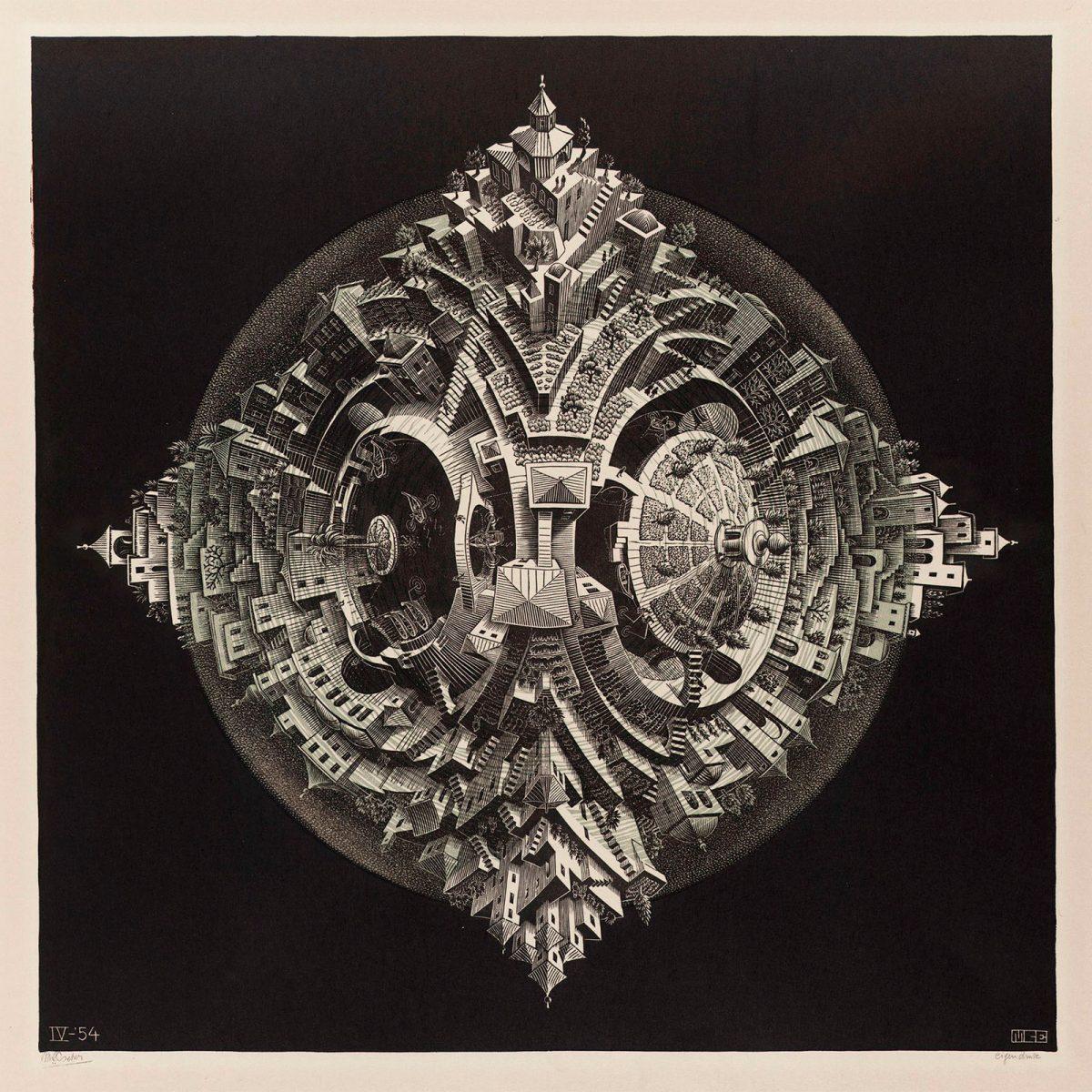
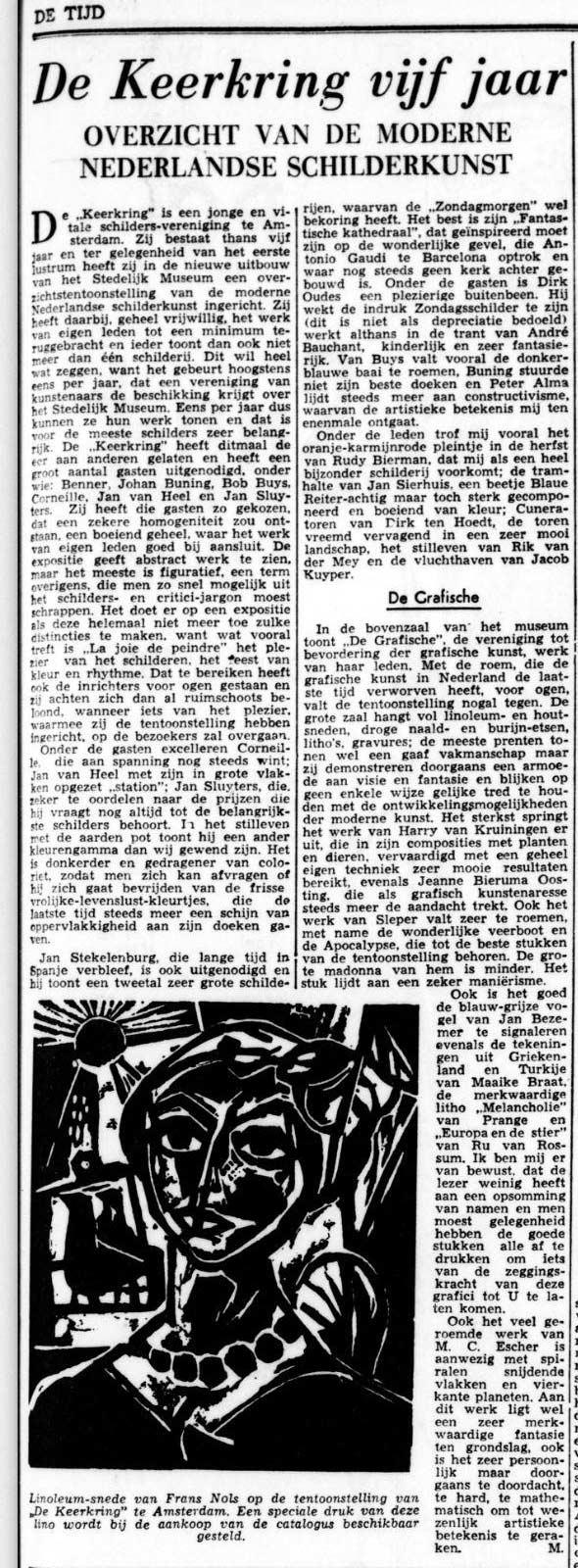
This view of Escher continued to recur regularly in the decades that followed, although positive pieces also appeared. It took until well into the 1990s before there was a consensus on the quality of Escher’s oeuvre and his unique place in art history. Nowadays, the artist is praised universally. He really is everywhere. To begin with, of course, at Escher in The Palace. But consider too the huge crowds drawn by the exhibition in the Fries Museum (which ends this weekend), the exhibition in New York that is currently running and the upcoming first major Escher exhibition in Australia, in The National Gallery of Victoria in Melbourne. The exhibition held in the Centro Cultural Banco do Brasil in Rio de Janeiro is the most obvious proof of Escher’s popularity. Between 18 January and 27 March 2011 it drew 573,691 visitors. Nearly 10,000 a day.
Map is loading...
More Escher today

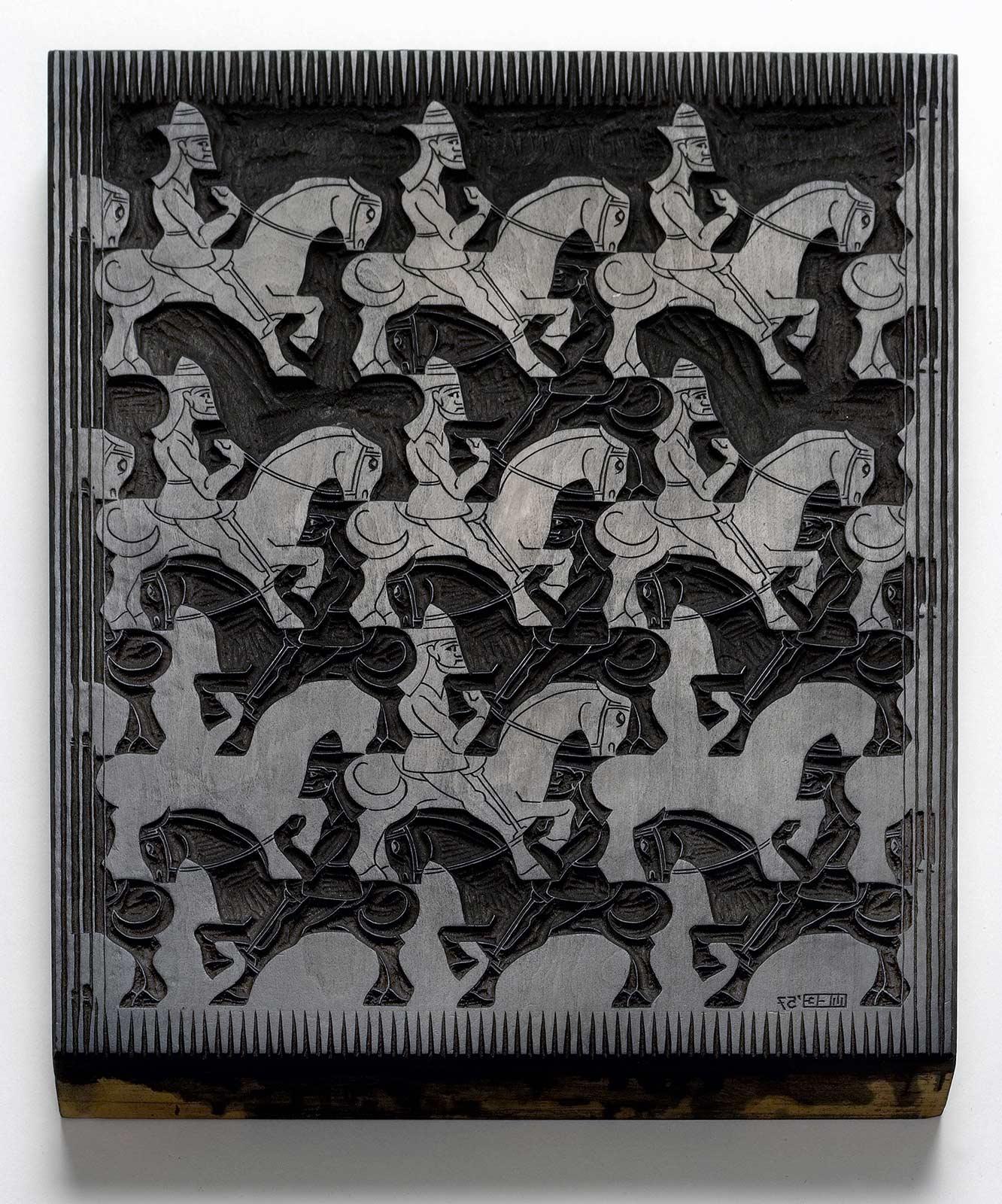
Woodblocks and The Regular Division of The Plane
